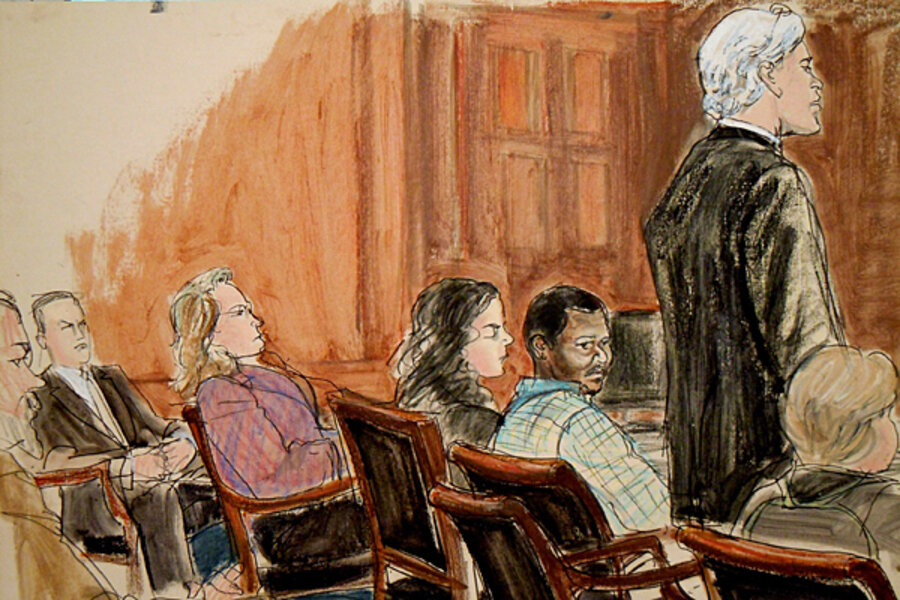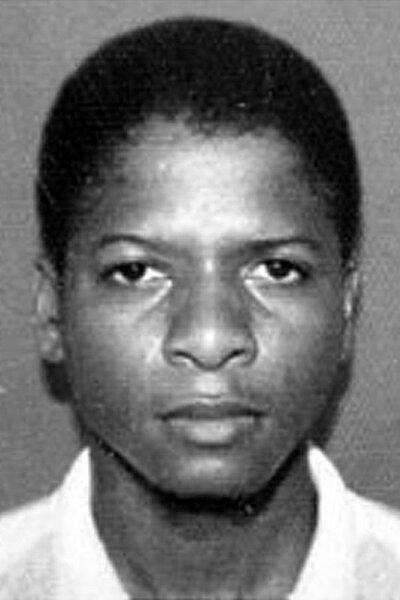Ahmed Ghailani gets life sentence for Al Qaeda bombing of US embassies
Loading...
A federal judge sentenced Ahmed Khalfan Ghailani to life in prison on Tuesday for his role in Al Qaeda’s 1998 truck bomb attacks on the US embassies in Kenya and Tanzania.
US District Judge Lewis Kaplan rejected requests by defense lawyers for leniency in recognition of Mr. Ghailani’s alleged mistreatment during harsh US interrogations. Instead, the judge imposed the maximum sentence on the 36-year-old Tanzania national.
Whatever the level of Ghailani’s suffering, it “pales in comparision to the suffering and the horror he and his confederates caused,” the judge told a packed Manhattan courtroom, according to the Associated Press.
Judge Kaplan brushed aside defense arguments and said that Ghailani knew and intended that people would be killed in the terror attacks.
“This crime was so horrible,” Kaplan said. “It was a cold-blooded killing and maiming of innocent people on an enormous scale.”
He added: “The purpose of the crime was to create terror by causing death and destruction on a scale that was hard to imagine in 1998.”
In a largely symbolic move, the judge also ordered Ghailani to pay restitution of $33 million to the US government and relatives of victims of the attack.
Ghailani was convicted in November of a single charge in his 285-count indictment – conspiracy to destroy buildings or property of the United States. The verdict included a special finding that Ghailani’s conduct caused at least one death.
But the jury, deliberating after a five-week trial, acquitted Ghailani of 284 other charges, including 273 counts of murder or attempted murder.
Critiques of his civilian-court trial
The case marked the first trial of a Guantánamo detainee in a US civilian court. It was viewed as a test case to determine whether other military prisoners at Guantánamo – including alleged 9/11 mastermind Khalid Sheikh Mohammed – would be tried in a federal court rather than by a special military commission at Guantánamo.
The case highlighted the challenges of affording full constitutional protections to terrorism suspects who were once held in secret detention overseas and subjected to harsh interrogation tactics by US intelligence officials.
A key government witness was barred from testifying at the trial that he sold TNT to Ghailani. Kaplan ruled that the testimony must be excluded because the witness’s identity was revealed to the US by Ghailani during coercive interrogation sessions. Defense lawyers said their client was subjected to “torture.”
Administration critics cited the shaky, one-count verdict as proof that Al Qaeda suspects should face trial at Guantánamo rather than in US courts. Last month, Congress approved a measure that bars the Obama administration from transferring Guantánamo detainees to the US for any purpose – including a civilian trial.
Others analysts have pointed to the Ghailani verdict as an example of the resilience and essential fairness of the US justice system.
The central focus of the trial was the coordinated truck bombing of the US embassies in Nairobi and Dar es Salaam on Aug. 7, 1998. The Nairobi attack killed 213 people. Eleven died in Dar es Salaam. Thousands were injured.
The government’s case showed that Al Qaeda spent months assembling various teams to scout targets, gather bomb components, build the truck bombs, and deliver the bombs to the targets. It even had an escape plan.
The trial was conducted in the federal courthouse in lower Manhattan, a short walk from where the World Trade Center once stood.
Ghailani's role a central issue
The central issue in the case was to what extent Ghailani was a full participant in the bombing plot.
Prosecutors portrayed Ghailani as a willing Al Qaeda recruit who operated at the heart of a terror cell methodically plotting to conduct mass murder.
“The defendant traded away everything in his life. His family, his friends, his job, his country, his name – all for a chance to kill as many people as possible,” wrote assistant US attorney Michael Farbiarz in the government’s sentencing memorandum.
“This was an appalling choice to make,” Mr. Farbiarz added. “The man who would make it is evil.”
Prosecutors presented testimony and evidence showing that Ghailani played a part in purchasing the Nissan Atlas refrigeration truck used for the bombing. He also played a role in purchasing 220 pounds of TNT, 15 gas cylinders filled with oxygen and acetylene, about 100 detonators packed with explosive PETN, and large bags of fertilizer.
Defense lawyers did not dispute that Ghailani was involved in purchasing the truck and other key components used to assemble the Dar es Salaam bomb. But they said he was a “dupe” used to conduct public transactions that would shield the involvement of the true Al Qaeda conspirators.
Ghailani’s lawyers say the 284 not-guilty verdicts demonstrate that the jury did not believe Ghailani was involved in premeditated mass murder. His role was something less, they said.
“Only after arriving in Pakistan did Mr. Ghailani learn the details and scope of the conspiracy, and to his horror, the enormity of how he had been used by those he considered to be his friends,” wrote Peter Quijano in his sentencing memorandum. “Upon hearing news reports of the bombings, he felt devastated.”
Federal prosecutors had asked Judge Kaplan to sentence Ghailani to life in prison. Defense lawyers said their client should receive a sentence of less than life in recognition of the jury’s verdict.
In 2001, four Al Qaeda suspects were tried and convicted in New York for their involvement in the embassy bombings. The four were convicted on all counts. All four received life sentences.
A defendant found guilty of only one count should receive a lesser sentence, Ghailani’s lawyers said. Kaplan was not convinced.
Defense lawyers also argued that Ghailani deserved a lesser sentence because of the harsh conditions of his treatment by the US government since his capture in 2004 in Pakistan. The lawyers say Ghailani endured “torture” for two years at a Central Intelligence Agency black site overseas. He was later held for three years at the terror prison camp at the Guantánamo Bay Naval Base.
Ghailani was transferred to New York City for trial in 2009. He is being held in an isolation cell in a high-security wing of the federal lockup.
Defense lawyers had also argued that Ghailani’s sentence should be further reduced in recognition of valuable intelligence information Ghailani provided the US government during his interrogations.






